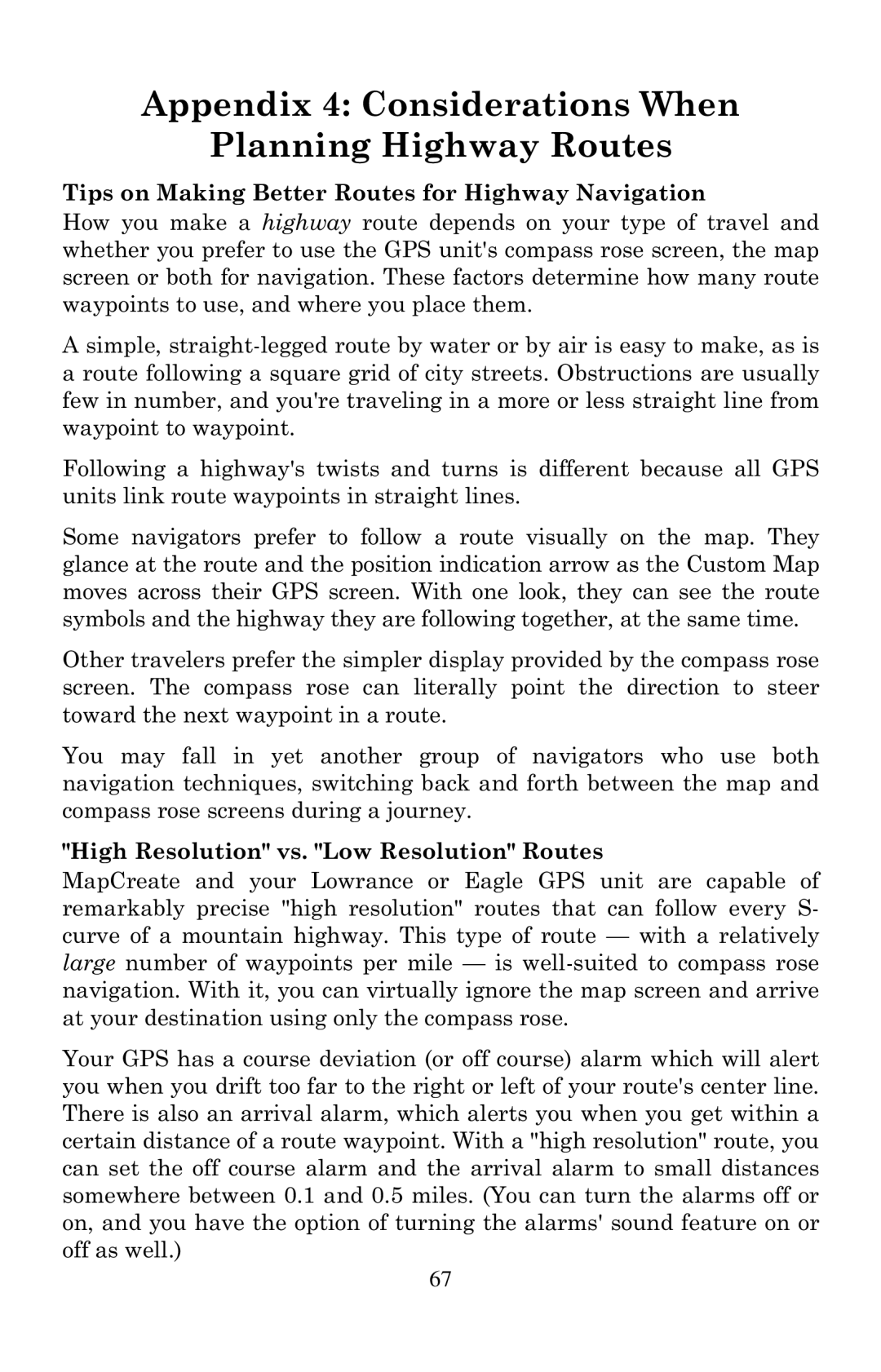Appendix 4: Considerations When
Planning Highway Routes
Tips on Making Better Routes for Highway Navigation
How you make a highway route depends on your type of travel and whether you prefer to use the GPS unit's compass rose screen, the map screen or both for navigation. These factors determine how many route waypoints to use, and where you place them.
A simple,
Following a highway's twists and turns is different because all GPS units link route waypoints in straight lines.
Some navigators prefer to follow a route visually on the map. They glance at the route and the position indication arrow as the Custom Map moves across their GPS screen. With one look, they can see the route symbols and the highway they are following together, at the same time.
Other travelers prefer the simpler display provided by the compass rose screen. The compass rose can literally point the direction to steer toward the next waypoint in a route.
You may fall in yet another group of navigators who use both navigation techniques, switching back and forth between the map and compass rose screens during a journey.
"High Resolution" vs. "Low Resolution" Routes
MapCreate and your Lowrance or Eagle GPS unit are capable of remarkably precise "high resolution" routes that can follow every S- curve of a mountain highway. This type of route — with a relatively large number of waypoints per mile — is
Your GPS has a course deviation (or off course) alarm which will alert you when you drift too far to the right or left of your route's center line. There is also an arrival alarm, which alerts you when you get within a certain distance of a route waypoint. With a "high resolution" route, you can set the off course alarm and the arrival alarm to small distances somewhere between 0.1 and 0.5 miles. (You can turn the alarms off or on, and you have the option of turning the alarms' sound feature on or off as well.)
67
